News
Danger of unroadworthy vehicles to the fore as a young life is snuffed out
View(s):Questions arise over vehicle import ban and wear and tear as Department of Motor Traffic officers crackdown on vehicles plying the roads
By Sandun Jayawardana
The tragic death of a 13-year-old boy in Wadduwa has again highlighted the danger posed by unroadworthy vehicles.
Gagana Kavintha Mendis, a Grade 8 student of Wadduwa Madhya Vidyalaya, was cycling with his younger brother near his home in Habaralagaslanda on May 25 when the side door of a passing lorry suddenly came loose and struck him. He was rushed to the Panadura Base Hospital but succumbed to his injuries while being treated at its Intensive Care Unit (ICU).
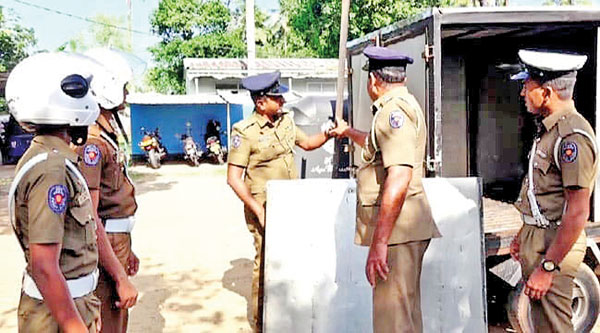
The side door of this lorry suddenly came loose and struck Gagana, claiming his life eventually
The lorry driver and the owner of the vehicle were both arrested. They were released on bail after being produced in the Panadura Magistrate’s Court.
On May 30, Gagana’s family and friends held a protest in Wadduwa demanding justice for him and urging authorities to take action against unroadworthy vehicles.
While authorities have launched operations to track down unroadworthy vehicles and take them off the roads, the task is by no means an easy one. 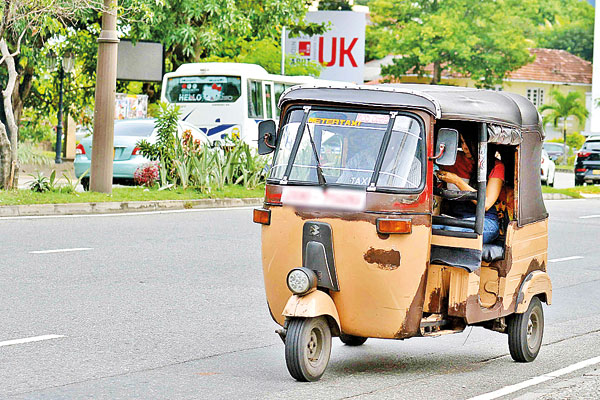
There are over 8.3 million registered vehicles in the country. Half of the country’s vehicle fleet is close to 30 years old, Motor Traffic Commissioner General Nishantha Weerasinghe told the Sunday Times. Given the high prices of vehicles after being subjected to import taxes, most vehicles that find their way to the Sri Lankan market are reconditioned ones. As such, rather than being brand new, the vehicles are already several years old by the time they are purchased.
Authorities must be mindful of this situation too, noted Mr Weerasinghe. “If we applied the rules 100 per cent, half the vehicles on our roads will have to remain parked at home.”
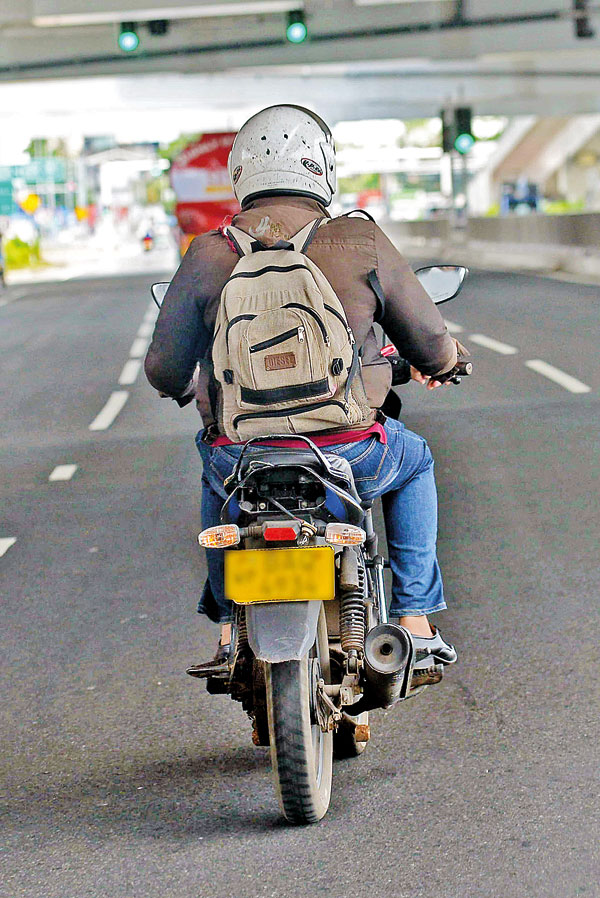
A bike without a brake light. Pix by Eshan Fernando
There are instances where inspectors from the Department of Motor Traffic (DMT) conduct operations jointly with the police to identify unroadworthy vehicles, the official said. While action is taken against vehicles that clearly pose a danger to other vehicles and pedestrians, those found with minor faults are instructed to repair them.
The DMT has also launched an operation to track down some 2.3 million of the registered 8.3 million vehicles that have not renewed their revenues licences for years. Last month, the DMT announced that it will blacklist vehicles that have not obtained revenue licences for the past five years.
Aside from operations conducted with DMT inspectors, police officers also routinely check vehicles for roadworthiness, said Police Spokesman Senior Superintendent of Police (SSP) Nihal Thalduwa. Special attention is made to check whether the breaks, horn, tyres and lamps of the vehicles are in working order. If a vehicle is found to be unroadworthy, legal action can be filed against the driver and/or owner under the Motor Traffic Act.
If an unroadworthy vehicle causes a traffic mishap that result in injuries or death however, criminal negligence charges can be filed against the driver and/or owner of the vehicle.
The police are especially concerned over the way various goods are transported in an unsafe manner, the police spokesman said.
Meanwhile, the age of social media has also led to a situation where drivers claim they are always in the right, SSP Thalduwa added. “It is difficult sometimes to convince them that their vehicle is not roadworthy or that they have committed a fault. People always have explanations and they even go on social media to insist how they are right.”
Last month, the DMT together with the police conducted a programme to check the roadworthiness of school vans and buses.
About 48, 000 vehicles are engaged in transporting school students. “We have no issue with our vehicles being checked,” said Lalith Chandrasiri, Secretary of the All Island School Student Transport Association. Nevertheless, in inspections conducted last month, some DMT inspectors had been overly harsh in certain aspects, he alleged.
In some instances, drivers had been told the tyres of their vehicles did not meet exact specifications. While the inspectors are legally correct in terms of the relevant gazette, Mr Chandrasiri claimed some had taken it to an extreme. “We can understand if action is taken against vehicles whose tyres have been so worn out that they pose a clear danger. But even when the tyre treads are clearly visible, they have warned vehicle owners to change the tyres within 10 days or face legal action.”
Given the high cost of tyres, Mr Chandrasiri said it was unfair for DMT inspectors to insist that vehicle owners change tyres that fall marginally afoul of regulations. “They must think of these issues in a humane manner.”
Meanwhile, a vehicle import ban has been in effect since March 2020. This too has contributed to the rising number of unroadworthy vehicles, notes Arosha Rodrigo, Secretary of the Vehicle Importers Association of Sri Lanka (VIASL).
The problem is especially acute in sectors such as the tourism industry. Many buses, vans and cars used to transport tourists are far too old, he said. “In European countries for example, the average age of tourist coaches is between 2-3 years. Here, the bulk of the coaches we have are more than 10 years old.”
Given the import ban, the price of vehicles in the market remain extremely high and out of reach for most. Maintenance costs too have skyrocketed. This translates down to high transport charges for passengers.
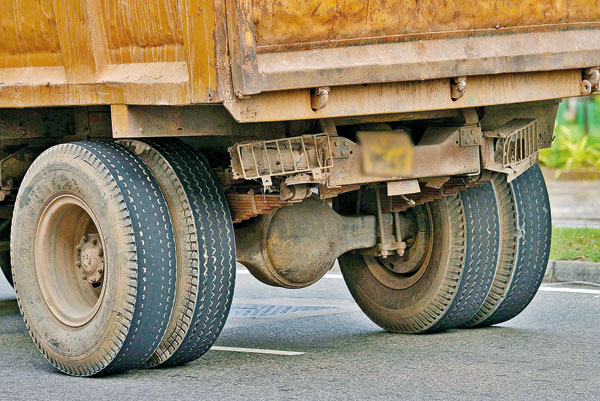
Unroadworthy: Corroded threewheeler (left) and an old truck (above)
The VIASL has said that if the government is not in a position to lift the import ban totally, it can at least consider lifting the ban for certain categories of vehicles. In tourism for example, there are seven-seater vehicles used exclusively for transporting passengers. “Just because you lift the ban on some categories such as passenger transport vehicles or trucks, it doesn’t mean everyone will jump at the chance to buy those vehicles. They are only used for specific purposes and it will not result in a massive outflow of foreign exchange.”
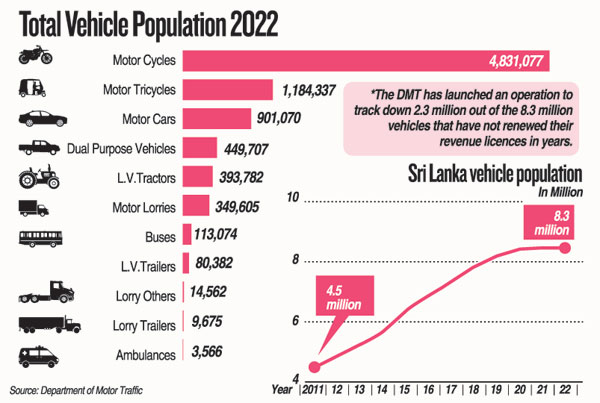
If the government is interested in attracting high-end tourists, it needs a change in strategy and giving them access to good quality vehicles could be one aspect of this, Mr Rodrigo opined.
The lifting of the ban on select categories would mean that the prices of these vehicles would come down. This in turn would lower transport costs. Consequently, the older vehicles would not be required to travel as much, he argued. “What’s happening now is that many of the vehicles involved in passenger and goods transportation are constantly in use due to the scarcity of vehicles. They travel long distances and are subjected to more wear and tear,” he pointed out.
Additional Reporting by
Sumith Pothupitiya
The best way to say that you found the home of your dreams is by finding it on Hitad.lk. We have listings for apartments for sale or rent in Sri Lanka, no matter what locale you're looking for! Whether you live in Colombo, Galle, Kandy, Matara, Jaffna and more - we've got them all!

